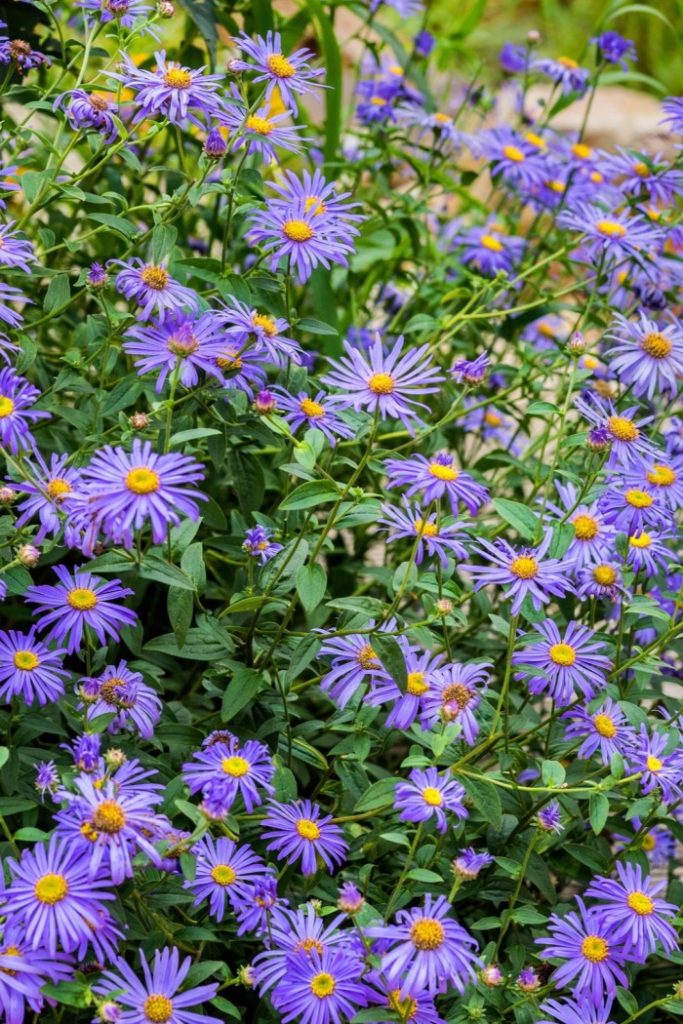Wildlife is wonderful — but not in my back garden

Unlock the Editor’s Digest for free
Roula Khalaf, Editor of the FT, selects her favourite stories in this weekly newsletter.
Here are two ideas about flower gardens that have gained wide support in the new millennium. I believe one and not the other. I believe that November in Britain has a millennial mildness that prolongs the season for flowery gardens and deserves a positive plan. I do not believe that flower gardens should be undiscriminating havens for wildlife. I am not running a Blue Cross sanctuary. As ever I want a flower garden, not a zoo. The two ideas conflict and gardeners need to choose which they prefer.
Supporting the first one, recent Novembers have been wonderfully flowery, a source of so many flowers for picking and using in the house. Dahlias have usually persisted, adding a range of colours that flowers bought from florists cannot match. Blue, pink and yellow salvias have persisted too and so have many fuchsias and annuals. Cosmos daisies go brown at the first hint of a cold night, but French marigolds and antirrhinums have continued to flower pickably.
This year, I have hit some snags. A single frost in early October browned my dahlias in open country and spoiled the lovely French marigold Colossus that had been a big success all summer. Mother Nature strikes back, I told myself, and turned to Michaelmas daisies instead. They seemed to be late, but I put down their unpunctuality to the grey weeks in mid- September.
I grow a range of Michaelmas daisies, including some I especially recommend. None of them suffers from mildew. In early September my pre-Michaelmas season begins with lovely blue Twilight, progresses with brilliant blue Little Carlow, my top choice, and then spreads into pink with Fellowship, white with tall Mount Everest, pink with Harrington’s Pink and a final flurry of blue this weekend on King George. This year’s September advanced, but no flowers showed on these stalwarts. Continuing to blame the drab weather, I went abroad, anticipating a bright return.


Even in early October, I found that none of the Michaelmas mainstays had opened. I went to have a closer look. Every single bud had been removed as if with a pair of scissors. Before I could blame vandals, I learnt to shift the blame. A barking deer, or muntjac, trotted out from behind a nearby hedge and left droppings as it departed. The droppings matched those beside the daisies in the border. Putting more than two and two together, I concluded that the muntjac had been enjoying an aster bud lunch.
I have never seen this cull before, but it has been extremely deft. The stems of the plants have not been flattened. No other plants have suffered except the very asters that give flower gardens a blue period as a finale. This year, most of my blue asters are flowerless. Only one variety has been spared, in many ways the best of all. Aster frikartii Mönch is not confined to Michaelmas. It is the longest-flowering daisy and the one you should all include. It starts to flower in July and often persists into October, putting out stems about 2 feet tall that fall forwards prettily unless they are staked. I use it in the front row of flower beds and have now learnt another of its qualities. It is unattractive to deer.
Since 1997, wildlife in the garden has been the subject of book after book on my shelves. They cover only a part of the real world. Some of them have heavenly pictures of harvest mice curled up asleep in nests. Others dilate at length on dormice. None of them dwells on the damage that comes with other wildlife, including damage by one type of wildlife to another. Badgers plough up lawns and kill hedgehogs. Sparrowhawks decapitate pigeons and leave them shredded on the grass. Squirrels strip bark from young trees and rabbits are a universal menace. My only dormouse was soon a dead one, beheaded by what experts then diagnosed as a feral mink. Surely slugs should be classed as wildlife too. They have had a dream year, wet and slimy. As a result they have massacred my small campanulas, imperilled bellflowers from Europe’s high mountains.
I wrote recently that a barking deer ruined my bulbs last spring by decapitating their stems. Three weeks after that column, its friends have rallied for a novel type of encore. For the first time ever they have hit me where flowery autumn is usually at its best.
Back to berries, I told myself, as they are out of reach of stumpy deer despite those pictures of goats in the branches of African trees. Decades ago, I wanted prolific yellow berries to brighten autumn, so I decided to plant a tree with yellow fruits. The obvious choice was a flowering crab apple, none more popular at that time than Malus Golden Hornet. It has spread its branches widely and covered itself yearly in yellow mini apples, but before I have had time to think of making jelly, the fruits all disappear. I have just watched the culprits, birds, specifically finches, which strip a Golden Hornet of its crop in a matter of hours.
I do not want to ban birds, though wandering cock pheasants ruin the flowers on spring crocuses and deep down I still respond in terror to Alfred Hitchcock’s film of birds’ aggression to humans. Is another yellow-fruited malus a better choice? Expert growers with big collections tell me that the answer is Malus baccata, the Siberian crab. It has prolific yellow fruits but they are too acidic to be palatable: birds leave them alone. If you want a small garden tree that flowers in May, has long-lasting yellow fruits in autumn and is tough in all weathers, Sibirica is the one to order.
No blues, no berries. But what about autumn bulbs? Like my tulip buds this spring, are they at risk to animal marauders? In grass I grow the excellent blue Crocus speciosus for flowers in September. This year a night-time visitor broke its stems and dug round the corms in the grass: to judge from the paw prints it was a fox on an uninvited spree.
There are safer alternatives here too: yellow sternbergias, crocus-shaped in flower and too thick in petal for animals to chew them. They are prime choices for modern hot summers as they flourish in Mediterranean countries, even on dry roadsides. The one snag is that they are only supplied in July and early August, just before they come into bud. They are easily forgotten.
Pink-flowered nerines, or Guernsey lilies, are more convenient. They are planted in April and May and their flowers on tall stems in late autumn are immune to animal attack. They are supposed to like hot summers and autumns, but this year they are revelling in the very opposite.
In open country wildlife has a right to roam, but a “wildlife garden” of flowers and vegetables rests on doublethink. Choose your daisies, berries and late bulbs carefully: take out a put option on those that wildlife munches, but remember, the candidates are increasing.
Find out about our latest stories first — follow @ft_houseandhome on Instagram
#Wildlife #wonderful #garden




